The Most Popular Virtual Events in 2022

Veronica Brundle - Feb 24 2022, 10:25:29 AM

Virtual events have been growing in popularity for several years, but the use of virtual events skyrocketed in 2020 as companies looked for ways to keep their workforces connected and engaged while working remotely due to the COVID-19 pandemic. In fact, virtual events were up 1,000% by May 2020 (compared to pre-pandemic) for 6Connex, one of several virtual events platforms.
Even as the world is beginning the journey of finding the “new normal,” virtual and hybrid events remain prominent. With many employees across a variety of industries continuing remote work, virtual events play a significant role in fostering positive working relationships and providing opportunities for teams to build camaraderie. This leads to greater employee engagement, satisfaction, and productivity.
With virtual events here to stay, companies and individuals want to learn about the many options when it comes to virtual events, what types of events are popular and effective in the workplace or in personal life, and what types of events are likely to remain popular in the future. That’s why we created this guide. We’ve taken a deep dive into the world of virtual events, exploring data to determine what types of virtual events are most popular in 2022 (and beyond). In this guide, we’ll discuss trends and data about a variety of types of virtual events.
Creative virtual events
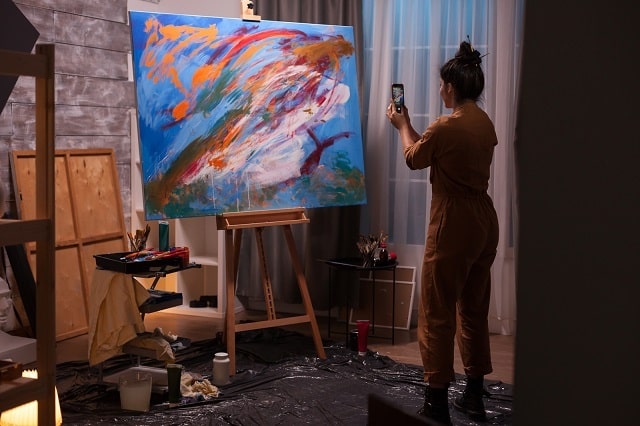
Creative virtual events include innovative activities, such as painting, crafts, knitting, and more. Guided by an expert, attendees learn how to paint a canvas, knit a blanket, or another craft with a group of friends or coworkers. These types of events are popular both as in-person and virtual events.
Virtual paint parties
It shouldn’t come as a surprise to learn that interest in virtual paint parties increased substantially around March 2020, when COVID-19 mitigation measures meant staying at home and social distancing. According to Google Trends data, the interest score for “virtual paint party” went from 0 in February 2020 to 76 that March. The week of April 26, 2020, marked the highest interest in the “virtual paint party” search term with an interest score of 100.
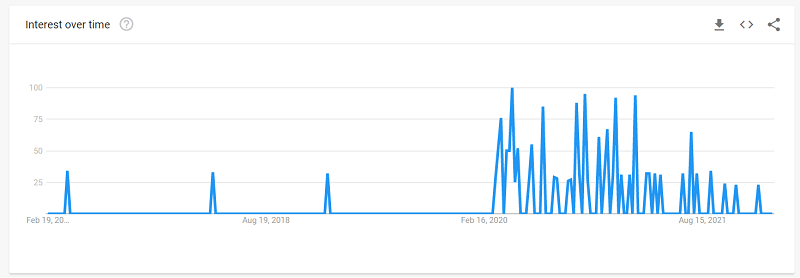
Screenshot via Google Trends
Interest in virtual paint parties was strongest in California and New York. While interest waned a bit throughout 2021 and early 2022, interest in virtual paint parties remains substantially higher compared to the pre-pandemic era.
Virtual craft parties
Virtual craft parties are much like virtual paint parties, but instead of painting a canvas, attendees will create another piece of art, such as origami, pottery, and much more. Interest in the “virtual craft party” search term first spiked in July 2020, perhaps after everyone had been to several virtual paint parties and were looking for something different.
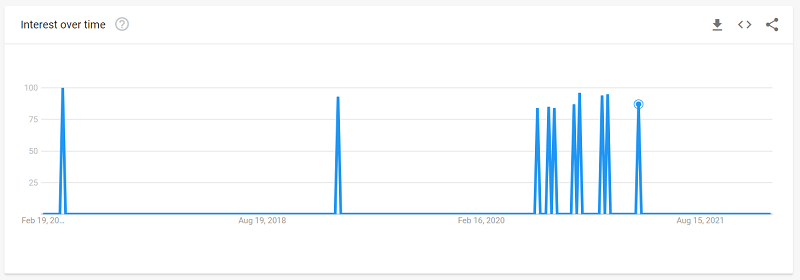
Screenshot via Google Trends
Interestingly, unlike “virtual painting party,” there was a spike in interest (100 interest score per Google Trends) in the week of April 9, 2017. Another slightly lower spike in interest occurred in the week of February 24, 2019, with an interest score of 93.
While there were multiple spikes in interest in the midst of COVID-19, throughout 2020 and early 2021, interest in virtual craft parties last peaked in the week of March 14, 2021, with an interest score of 87 before falling to 0, where it has remained since.
This category can also include activities such as creating a desktop garden and designing a planter, although terms like “virtual gardening party” and “virtual planting party” don’t have enough data for analysis.
Gaming virtual events

Gaming virtual events include everything from trivia night to scavenger hunts, escape games, murder mysteries, and more. These events are often well-suited for business environments, allowing coworkers to work together as a team to solve a challenge.
Virtual escape games
Virtual escape games aren’t a new innovation, but like other types of virtual events, search interest spiked shortly after the start of the pandemic, in the week of March 29, 2020. Interest remained strong through mid-2020 and increased again from December 2020 to February 2021 before decreasing, with the most interest coming from California. It’s likely that some of the December 2020 increase resulted from businesses seeking creative ways to hold team events for the holiday season without gathering in person.

Screenshot via Google Trends
Interest in virtual escape games continues to remain higher than pre-pandemic, with interest scores reaching more than 40 at times. Even though in-person events may be possible today, virtual escape games promise tons of fun for dispersed and remote teams.
Virtual trivia games
The pandemic drove people to the virtual world in droves in search of entertainment and team-building activities that can be done from a distance. Subsequently, event planners had to rise to the occasion and adapt their events to the virtual world. In fact, according to Statista, 70% of event professionals moved some or all of their in-person events to a virtual platform in response to the pandemic. As a result, search interest in virtual activities and events increased for many types of virtual events around the start of the pandemic, and virtual trivia games are no exception.
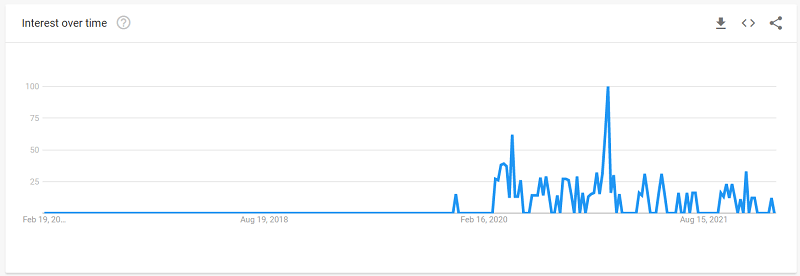
Screenshot via Google Trends
Most recently, interest has waned somewhat, but interest scores for “virtual trivia game” peaking at 12 so far in 2022. Looking at the Google Trends data for the past 12 months provides a clearer picture of the common interest level from February 2021 to February 2022.
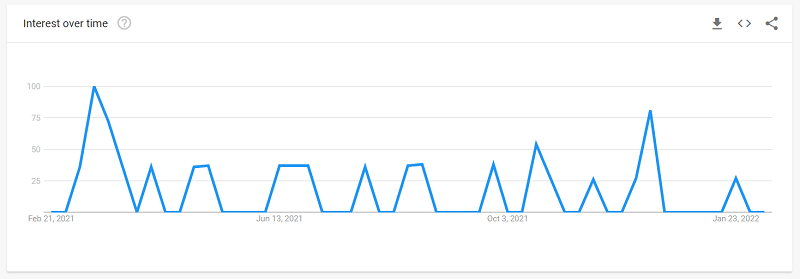
Screenshot via Google Trends
It’s likely that virtual trivia games are here to stay and will retain at least some interest, particularly around the holidays.
Virtual scavenger hunts
Virtual scavenger hunts are another popular type of virtual event, and these events can be general or focused on a specific theme. For instance, a virtual scavenger hunt might center around a holiday or include only items of a specific color.
Rather than the traditional scavenger hunt, in which the organizer places objects in various locations that participants must find, virtual scavenger hunts are usually based on common household or office items that most participants are likely to have access to. For instance, attendees might be asked to find their favorite mug, a hairbrush, book, and similar items. Additionally, virtual scavenger hunt attendees might be asked to complete challenges, such as taking a selfie or solving puzzles within a specified time.
While there was some periodic interest in virtual scavenger hunts pre-pandemic, interest in these virtual events spiked in the week of March 29, 2020. Interest in virtual scavenger hunts peaked in the week of August 23, 2020, reaching an interest score of 100.
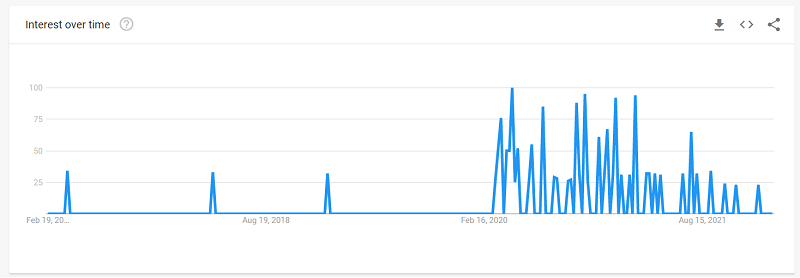
Screenshot via Google Trends
Virtual scavenger hunts aren’t going to go away anytime soon either, as interest remains higher than it was pre-pandemic. Interestingly, while interest in some other types of virtual events has been significantly higher in one or two states (often California and New York), there are varying levels of interest in virtual scavenger hunts across many states. Interest is highest in Virginia, Arizona, Kansas, Maryland, and Massachusetts, according to Google Trends.
In addition to the types of gaming virtual events discussed above, there are many other types of virtual gaming events, from virtual chess to bingo, game show–like events, and many others. This is a virtual event category with possibilities limited only by your imagination.
Food and beverage virtual events
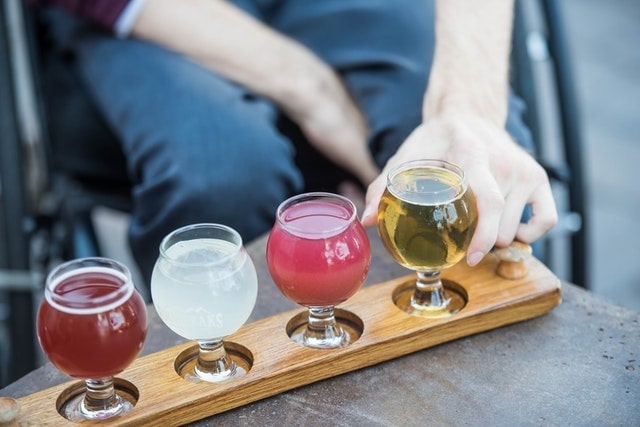
The food and beverage category of virtual events includes a variety of options, from tastings to cooking classes. For these events, organizers typically send attendees the foods or beverages they’ll be tasting in advance. For cooking and baking classes, attendees may be sent ingredients in advance or simply provided with a list so they can do their own shopping.
Virtual cooking classes
Interest in the “virtual cooking class” search term peaked in December 2020, reaching an interest score of 100, according to Google Trends data. While there was an initial increase in interest in early 2020, coinciding with the start of the pandemic, virtual cooking classes didn’t really take off until late 2020. It’s likely that some of that interest was generated by people looking for creative holiday gifts for family and friends or virtual team-building activities that could take the place of in-person holiday gatherings.
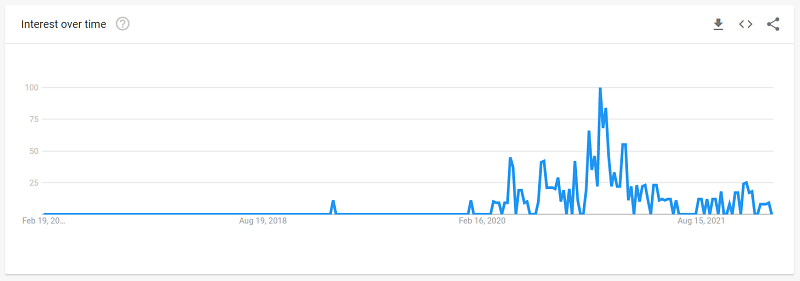
Screenshot via Google Trends
According to Supermarket News, 65% of consumers cooked more at home during the pandemic, and many of them turned to guided cooking lessons to learn to cook or experiment with new foods and recipes. It’s also possible that people turned to virtual cooking classes as they planned their holiday meals, especially those who found themselves preparing an entire holiday meal on their own for the first time if they couldn’t hold their typical gatherings with family and friends.
Google Trends indicates continued interest in virtual cooking classes throughout 2022 so far.
Virtual happy hours
Happy hours were once common activities for coworkers at the end of a long day or week. These types of activities can help maintain a sense of camaraderie. Remote work, social distancing, and stay-at-home orders made happy hours impossible at the start of the pandemic, but only until the idea of virtual happy hours came about. After all, we were doing many other things remotely that we used to do in person, why not happy hour, too?
Search engines were busy in early to mid-2020, with many people searching for ways to turn their regular daily activities into something comparable that could be done virtually. Interest in the “virtual happy hour” search term suddenly spiked in early March 2020 and peaked at an interest score of 100 in the week of March 22, 2020.
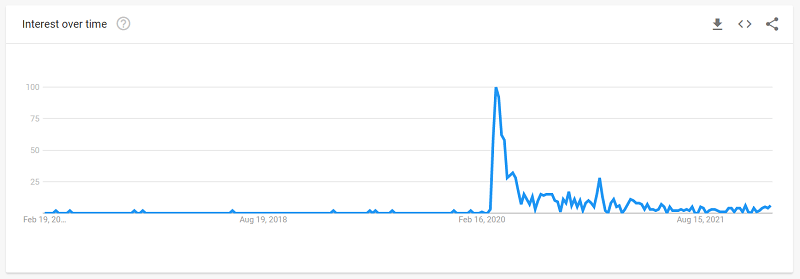
Screenshot via Google Trends
Like virtual scavenger hunts, there are varying levels of search interest in virtual happy hours across most U.S. states. The most interest comes from Washington, DC, New Jersey, Virginia, Maryland, and Delaware.
One added perk of virtual happy hours: If you have coworkers who typically aren’t comfortable with the traditional happy hour because they abstain from alcohol, they can participate in a virtual happy hour from the comfort of home with the beverage of their choice.
Virtual wine tasting
Another in-person activity turned virtual, wine tastings have become a popular virtual event in the past couple of years. Organizers of virtual wine tastings typically send the selected wines to each attendee before the scheduled event. Often hosted by a wine consultant or connoisseur, virtual wine tastings not only give participants a chance to discover their new favorite wine, but also learn what wines pair best with what foods.
Like many other types of virtual events, interest was spurred by the pandemic, with search interest for “virtual wine tasting” first spiking in the week of Apri
Originally published at Feb 24 2022, 10:25:29 AM. Updated on Jul 14 2025.









